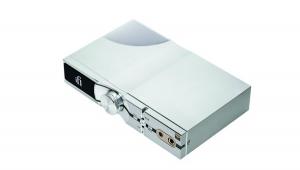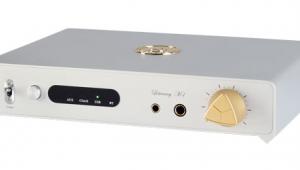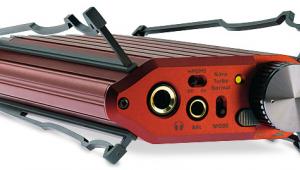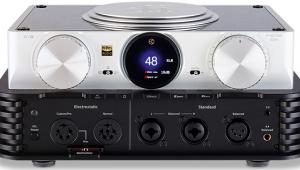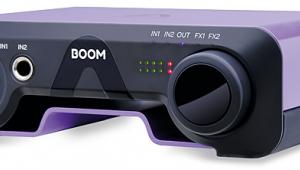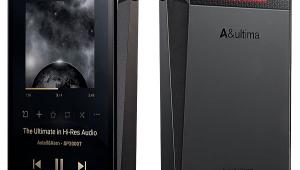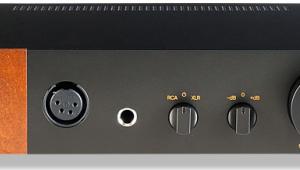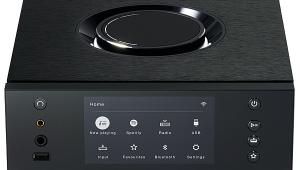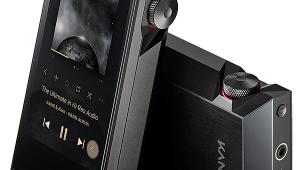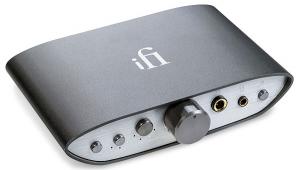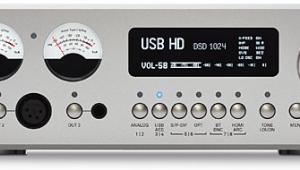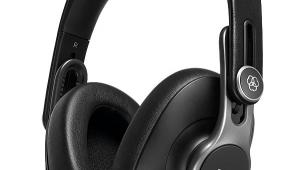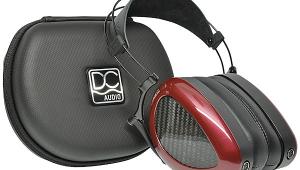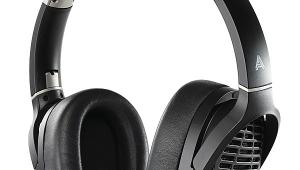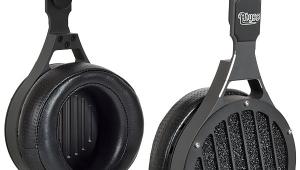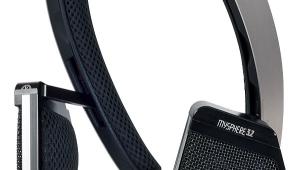Warwick Acoustics Aperio Headphone System
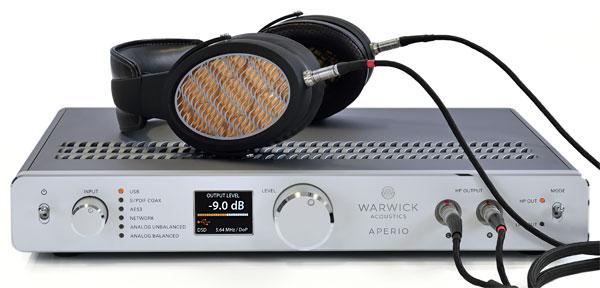
 It's a brave company that launches a £20,000 headphone as only its second product – and an electrostatic too. Yet more remarkable: that company isn't Chinese but British!
It's a brave company that launches a £20,000 headphone as only its second product – and an electrostatic too. Yet more remarkable: that company isn't Chinese but British!
Electrostatic headphones are like royalty: rarefied enough to assume an aura that rivets mass attention. In the case of Warwick Acoustics' Aperio, it's not just its operating principle that catches the eye and sparks interest but its price too: at £20,000 this isn't the most expensive headphone/amplifier combination ever seen but it's up there with the very few daring to dangle a price tag greater than that of a family car.
Warwick Acoustics, it must be said, makes considerable effort to justify the cost of the Aperio beyond promises of transcendent sound quality. Not only is it supplied with a versatile DAC/amplifier (no small energiser box here), it also comes with special USB and Ethernet cables (2m and 3.1m in length respectively) and a massive, wheeled Peli case for storage and transportation. The whole thing weighs over 20kg when loaded and is never going to pass as a listening room presentation case – but the Four Horsemen of the Apocalypse would quail at it.
Impact Drivers
Looking at the Aperio can induce a sense of déjà vu. Isn't this the Sonoma Acoustics Model One (M1) [HFN Feb '18]? No, it isn't – but the visual similarity is no surprise given that the Model One uses drivers built in Warwick Acoustics' Nuneaton factory. (Final assembly of the Model One takes place in Asia whereas the Aperio is assembled here in the UK.)
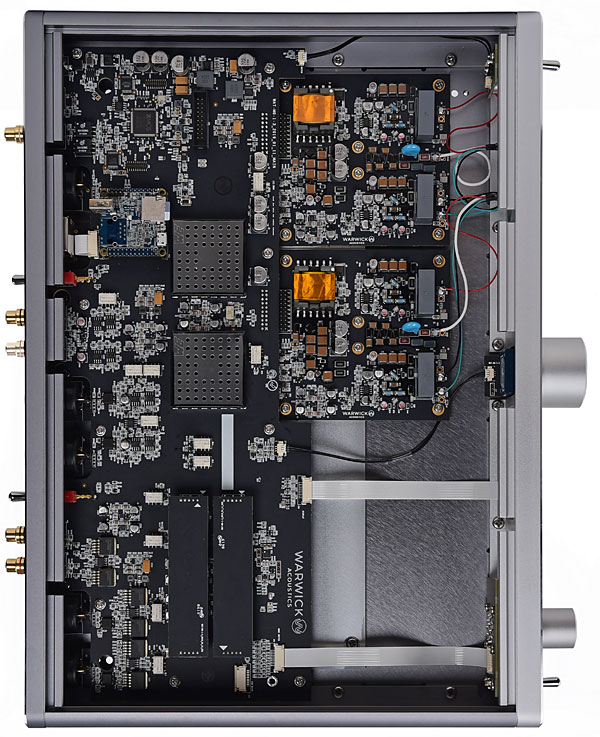
What distinguishes the two most importantly is that the drivers used in the Model One are single-sided, whereas those in the Aperio are symmetrical, push-pull designs. Expressed in loudspeaker terms (assuming that your memory stretches back to the 1950s), the Model One is a Janszen tweeter to the Aperio's Quad ELS.
The result should be lower distortion, and Warwick Acoustics also claims a doubling of diaphragm excursion capability. However, it's worth noting immediately that the Aperio does not support very high peak output levels. Via its amplifier's digital inputs it is specified as achieving a maximum output of 104dB SPL rms, equivalent to 107dB peak for a sine input, with a minimum of 106dB SPL available via the unit's analogue input.
Let's look more closely at the electronic unit, which at 413x68x315mm (whd) is about the size of a slim integrated amplifier. On the fascia, left to right, are a chunky on-off toggle switch (up is on), rotary input selector with LED indication of the active input, a small colour display which shows volume level setting (0dB maximum) and details of the input (eg, sampling rate and bit depth). Centrally a large rotary control adjusts volume, and to the far right – beyond the latching left/right headphone output sockets – is a second toggle switch that directs output either to the headphones or the line output.
Code Of Practice
On the back panel, left to right when facing it, are a socket for DC input from the external PSU, followed by four digital audio inputs: USB-B, coaxial S/PDIF, AES/EBU (on XLR) and a network (Ethernet) input via an RJ45 socket. Next come the analogue inputs, both unbalanced (RCA) and balanced (XLR) with toggle switches to control input sensitivity. Last, to the right, are the analogue outputs, unbalanced and balanced like the inputs.

Central to the design philosophy of the electronics is that no transcoding takes place within. Neither DSD nor analogue inputs are converted to PCM. So PCM inputs are equalised by DSP, while DSD and analogue signals are equalised using equivalent analogue circuits. Warwick Acoustics says that the digital and analogue EQ curves match each other extremely closely, and I was able to confirm that as part of my testing for the lab report.
The DAC/energiser runs quite warm, so the ventilation holes at the front of the top panel are not a merely aesthetic touch. Four ultra-quiet internal fans operate if device temperatures rise too high but were never triggered during my time with the Aperio and won't be, Warwick Acoustics says, 'in 90% of usage cases'. The headset isn't featherweight at 406g but is still lighter than the heaviest planar magnetics. Deep, elliptical earpads just large enough to accommodate my pinnae, a wide scalp pad on the headband and moderate head clamping force (6.7N for 150mm head width) ensure that it's comfortable to wear. But I found that the earpads, particularly the right one, were prone to squeak in response to jaw movements.
![]() Born Free
Born Free
My listening took in analogue, S/PDIF and USB inputs, the first derived from a Chord Electronics Qutest DAC [HFN Nov '18] while S/PDIF came from a TC Electronic Impact Twin FireWire audio interface and second-generation Mac mini. As for USB signals, these were derived from my desktop PC with the Aperio's ASIO driver installed. The first thing to say about the Aperio's sound is that it has a largely neutral tonal balance, blissfully free (for me) from the low frequency emphasis and consequent thickening of textures that has become fashionable in recent years. The corollary of this, of course, is that if that's the type of tonal balance you crave, you may find the Aperio's sound to be a little chilly.
Whatever headphone you buy, though, this is an inescapable issue and you need to decide where you stand on it. Me, I'm relieved that Warwick Acoustics has stayed true to the principles of high fidelity and resisted the temptation to sacrifice accuracy for added warmth and 'easy listening'. But note what I say in the lab report about the Aperio's sensitivity to earpad sealing. If the seal is compromised by thick spectacles or hair the Aperio will lose bass, and then its sound will lack natural warmth and weight.
